1-Pack Ultrasonic Pest Repeller Plug-In with Night Light – Indoor Electronic Repellent
$18.99 Original price was: $18.99.$16.88Current price is: $16.88.
Quietly nudge pests out of your space with this Ultrasonic Pest Repeller plug in. It emits high-frequency sound people cannot hear, pairs a soft night light for after-dark hallways, and adds a non-chemical layer to kitchens, bedrooms, offices, and break rooms. Use it as part of a smart plan that includes sealing gaps, cleaning up food films, and setting targeted traps, since regulators treat these as devices and warn against miracle claims.
Description
If you are done with late-night scurrying and surprise roaches in the sink, the Ultrasonic Pest Repeller, Electronic Repellent Plug-in with Night Light and Flashing gives you a quiet, simple way to start pushing pests out of your living spaces. It plugs into a wall outlet and emits high-frequency sound that people cannot hear but rodents and insects can, while the soft night light helps you navigate halls and kitchens after dark.
I will be straight with you from the start. Independent lab and government guidance say ultrasonic devices can be part of a plan, not the full plan, because results vary by pest and setup, and claims must be grounded in evidence. I will show you exactly how to use this style of repeller realistically and safely, with facts from manuals, pest-control experts, and regulators so you can decide with confidence.
Key Customer Benefits
- Non-toxic, family-friendly control that runs in the background. An indoor ultrasonic pest repeller plug in does not put insecticide on your counters or bait on the floor, which many families prefer as a first step before chemicals. U.S. regulators classify these as “pesticide devices,” not pesticide products, so there is no chemical residue to manage.
- Simple to install and low-maintenance for busy homes. You plug it in, check the indicator light, and let it operate continuously. Universities and extension guides note these products are typically small outlet devices with an LED status light, so there are no traps to reset and no refills to buy.
- Pairs well with what already works, so you get compounding results. Independent experts stress that ultrasound on its own has mixed results, but it can supplement proven IPM habits like sealing gaps, removing food sources, and setting mechanical traps in high-pressure areas. If you are already cleaning and sealing, adding a repeller is a low-effort “extra layer.”
- Continuous coverage in rooms where sprays feel awkward. Kitchens, nurseries, pantries, and office break rooms are places people often hesitate to spray. A plug-in electronic roach repeller or indoor ultrasonic mouse repellent can run quietly in those spaces while you reserve baits and traps for behind-the-scenes spots. Remember that ultrasound weakens with distance and around obstacles, so place units thoughtfully.
- Transparent, realistic expectations that protect your budget. The Federal Trade Commission has repeatedly warned brands not to over-promise on these devices. That is good for you because it sets the expectation that results vary by layout and pest pressure, and that any “miracle cure” claims should raise a red flag. We recommend buying one unit, placing it correctly, and evaluating over a couple of weeks before scaling up.
- A calmer, cleaner starting point for a bigger plan. Consumer and university sources agree the evidence is mixed: some pests habituate and sound does not go through walls well. Still, many households like using a repeller as a gentle first move while they tighten sanitation and add targeted traps, a practical way to reduce drama while you work the IPM checklist.
Product Description
What this plug-in is, and where it fits in your plan
The Ultrasonic Pest Repeller, Electronic Repellent Plug-in with Night Light and Flashing, 1 Pack is a small outlet device that runs continuously and emits high-frequency sound people cannot hear. The goal is to make a room less comfortable for pests such as mice, rats, roaches, and spiders, while you keep food sealed, close entry gaps, and deploy traps where needed.
In United States rules these are regulated as pesticidal devices rather than chemical pesticides, so there is no spray or bait involved, and no residue on counters. That distinction matters for safety and expectations. Devices must be sold truthfully, but they are not registered like chemical products, so buyers should lean on independent guidance and use them as part of an integrated program.
How ultrasonic repellers work
Ultrasonic units produce sound above human hearing, usually above 20 kilohertz. Rodents hear well into these higher ranges, roughly one to one hundred kilohertz, which is why the sound is aimed at them rather than at us.
In theory the changing pulses annoy or confuse pests, or interfere with their normal communication, which can nudge them to move away from open areas and food sources. In practice, results vary. Sound behaves like a beam of energy, it does not pass through walls or around corners easily, and soft furnishings can absorb it. That means you place one unit in the room you want to influence, keep it in open view, and avoid blocking it behind a fridge or sofa.
What the science says, and what to expect
Decades of lab and field trials have tested ultrasonic devices. University and extension reviews report that most commercial units show little to no effect on German cockroaches, ants, bed bugs, and mosquitoes, and only mild, short-lived effects on rodents that often fade as animals get used to the sound.
Some mosquito tests even showed increased biting when certain tones were playing, which is a good reminder to treat bold claims with caution. Regulators have also warned sellers not to over-promise without solid data. Put plainly, an ultrasonic pest repeller plug in is not a magic wand. It can be a low-effort layer that supports sanitation, sealing, and trapping, and it works best when placement is smart and pressure is low.
Why this format still helps households
If your kitchen is where everyone eats and your nursery is where a baby naps, you may prefer to try a non-chemical option first. A plug-in with a status light makes it easy to confirm power, and the night light can double as a gentle hallway guide after dark. Many homeowners like using a unit in rooms where sprays feel awkward, while they put snap traps or gel baits out of sight in utility spaces.
Even strong critics of ultrasound agree on a few practical points. Ultrasound does not go through walls, so use one device per room. Keep a clear line of sight. Combine with sealing and cleaning. Evaluate the room for two weeks, then decide if you want to keep it as part of your routine. These are reasonable, budget-friendly steps that match both research and field experience.
Product Specifications
| Spec | What to Expect | Why it Matters |
|---|---|---|
| Device type | Electronic ultrasonic pest control device, classified by the U.S. EPA as a “pesticidal device,” not a chemical pesticide | Devices do not leave residues and are overseen for truthful marketing, yet they are not registered like chemical pesticides. This sets realistic expectations and safety context. |
| Intended targets | Rodents first, sometimes marketed for roaches, ants, spiders, mosquitoes | Rodents hear higher frequencies than we do, so ultrasonic sound is aimed at them. Effectiveness for insects is mixed and is often limited. |
| Ultrasonic frequency | Commonly advertised around 20 to 65 kilohertz | Above human hearing and inside the rodent hearing band in many models. Frequency is often variable or swept. |
| Coverage per unit | Short range, often a single room, roughly 20 to 30 feet in open line of sight | Ultrasound does not travel through walls, and soft furnishings can absorb it. Plan one unit per room you care about. |
| Power source | Standard wall outlet, continuous operation | Nothing to refill, just keep it plugged in with a clear path for sound. |
| Indicator and night light | Status LED and soft night light built in on many models | Confirms the unit is powered, and gives a gentle navigation light after dark. |
| Recommended placement | Open outlet, not behind furniture or curtains, ideally facing likely entry points | Hard surfaces reflect ultrasound and help it bounce around the room, while soft surfaces absorb it. Keep a clear line of sight. |
| Operating approach | Run continuously, evaluate for one to two weeks | Any effect tends to be modest and can fade if animals habituate. Use as one layer in an Integrated Pest Management plan. |
| Safety and compliance | No chemical residue. Sellers must avoid unsubstantiated claims under U.S. FTC rules | The FTC has warned and taken actions against over-promises about ultrasonic devices. This is good for buyers because it curbs hype. |
| Not a stand-alone fix | Works best alongside sealing, sanitation, and targeted traps or baits | University and extension reviews emphasize combining methods for reliable control. |
How to Use and Install
Before you plug it in
Ultrasonic devices are classed by the U.S. EPA as pesticidal devices, not chemical pesticides. That means no residues on your counters, but it also means you should treat them as a support tool rather than a silver bullet. The Federal Trade Commission has warned sellers for years not to over-promise because any rodent response can be short lived and insects are rarely controlled by sound alone. You will get the best results when you pair this unit with sealing, sanitation, and targeted traps.
Choose the right rooms
Ultrasound behaves more like light than like scent. It travels in straight lines, weakens quickly with distance, and does not pass through walls or around heavy furniture. Plan one unit for the room you care about most, such as a kitchen, pantry, child’s room, office, or break room, and keep a clear line of sight from the outlet to the area where pests are active. Soft furnishings absorb sound, while hard surfaces help it reflect.
Placement that actually helps
Use an open outlet that is not hidden by a sofa, curtain, refrigerator, or stacked boxes. Aim the speaker face toward likely paths such as along baseboards, under cabinets, or toward a known gap. Most university reviews say to expect single-room influence only in the range of a few meters when the path is clear, so do not expect whole-home coverage from a single plug-in.
Step-by-step installation
- Clean first. Wipe food films, put open foods into sealed bins, and vacuum crumbs along baseboards so you are not competing with a buffet.
- Seal the easy leaks. Close pencil-thin gaps with copper mesh and sealant. Even simple sealing reduces new entries while the unit runs.
- Plug in and power check. Use a standard wall outlet. Confirm the status light or night light is on. Leave the face uncovered.
- Run continuously. These devices are designed to stay on. Set a calendar note to reassess after ten to fourteen days. Some research notes that any observable change often appears after about ten days, and many evaluations find effects to be modest or temporary, so this check-in keeps you honest.
Pair with what is proven
Keep the plug-in running while you place snap traps for mice in utility areas and gel baits for roaches in hidden crevices. Integrated Pest Management guidance from universities is clear. Exclusion, sanitation, and targeted controls are what solve infestations reliably. The ultrasonic unit can make open areas a little less comfortable while your proven tools do the heavy lifting.
Pet and family safety notes
For people, these devices are considered safe to operate in living spaces. Most cats and dogs are not affected. Pet rodents and some small mammals are a different story. Hamsters, guinea pigs, rabbits, and pet rats have acute high-frequency hearing and may become stressed if kept close to an operating unit. If you keep small mammals, place the device in a different room and watch for signs of agitation such as thumping or hiding. When in doubt, ask your veterinarian.
Common problems and quick fixes
- You still see mice crossing the room. Move the unit to an outlet with a cleaner line of sight. Add or relocate snap traps to travel paths behind appliances where sound does not reach. If signs persist, you likely have an entry gap. Go back to sealing. University reviews and FTC actions both stress that ultrasound alone does not remove established rodents.
- Roaches ignore the device. This is common. Use gel baits and insect growth regulators in cracks and voids, then keep the plug-in as a gentle background layer for kitchens or nurseries where you avoid sprays. Multiple independent evaluations report little to no effect of ultrasound on German cockroaches.
- You or a neighbor hears a faint whine. Rarely, some people can detect a high pitch from certain models, especially outdoor units. If it bothers you, try a different outlet orientation or move the device to a less echo-prone room. If a neighbor complains about an outdoor unit, relocate or disable it.
If you see ongoing droppings, gnawing, or live activity after two to three weeks of IPM work and continuous operation, call a licensed pest professional. For bed bugs in particular, universities list ultrasonic devices as money-wasting methods. Professional inspection and a structured treatment plan are the safer path.
Frequently Asked Questions
Do ultrasonic pest repellers actually work on mice and rats?
Short answer, you can get small, short-term changes in behavior, but these devices are not a reliable stand-alone fix. University extension reviews report mixed or no measurable control in real homes, and the U.S. Federal Trade Commission has cautioned sellers for making unproven claims. You will get the most value when you use a repeller as a gentle background layer while you seal entry points, remove food sources, and set traps where activity is heaviest.
Will it help with roaches and ants?
Evidence for cockroaches and ants is weak. Controlled studies and extension summaries have repeatedly found little or no repellency for German cockroaches, and ants are usually unaffected behind walls and cabinet voids where sound does not reach. For these pests, use targeted gel baits and insect growth regulators in cracks and hidden voids, then keep the ultrasonic unit as a background layer in kitchens or nurseries where you prefer to avoid sprays.
How about mosquitoes, especially at night?
High-quality reviews on electronic mosquito repellents, including a Cochrane analysis of multiple field trials, found no evidence that ultrasound prevents bites or disease. If mosquitoes are your main concern, focus on screens that close well, remove standing water, and use a proven skin repellent.
I read that pests get used to the sound. Is that true?
Yes, habituation is a known problem. University and practitioner sources note that rodents can ignore constant tones over time, especially when food or shelter is nearby. That is another reason to run the unit alongside exclusion and sanitation, rather than expecting it to clear an active infestation by itself.
Does the sound go through walls or around furniture?
No. Ultrasound behaves more like light than like scent. It travels in straight lines, weakens quickly with distance, and is absorbed by soft materials. Plan on one device per room you want to influence, and keep a clear line of sight from the speaker to likely pest paths.
Is it safe for people, kids, and pets?
These are devices, not chemical pesticides, so you are not putting residues on floors or counters. Most adults cannot hear ultrasonic output, but a minority of people, especially younger listeners, may hear or feel tones near the edge of human hearing and find them annoying. Pet rodents and some small mammals are more sensitive to high frequencies, so keep units away from their enclosures.
How long before I know if it is helping?
Give it ten to fourteen days while you also seal, clean, and set traps. Any effect usually appears in the first couple of weeks, and if you still see fresh droppings or live activity after that, escalate to proven controls or a professional inspection.
Where is the best place to plug it in?
Use an open outlet in the same room where you see signs, not behind a fridge or sofa. Aim the speaker toward baseboards, the stove gap, or known entry points. Hard surfaces reflect sound, soft textiles absorb it, and walls block it, so placement matters more than power claims on the box.
Can I run one device for the whole home or office?
Plan on one per room you want to influence, and treat hallways, closets, and wall voids as acoustic barriers. Marketing often implies large coverage, however extension bulletins emphasize single-room influence only, with clear lines of sight.
Will the night light or flashing bother pests less or more?
The light is mainly for you, it confirms power and helps with after-dark navigation. There is no solid evidence that a built-in LED meaningfully changes pest behavior compared with the ultrasonic output itself. Focus on placement, clear sight lines, and pairing with proven tools.
What should I do if I can still hear a high-pitched whine?
A small portion of people can hear tones near the top of human hearing, and some devices leak audible harmonics. Try another outlet, rotate the face, or use a model that shifts frequencies. If it still bothers you, discontinue use and switch to traps, sealing, and baits, which are consistently effective.
Conclusion
If you are weighing this ultrasonic pest repeller plug in as your next step, here is the honest bottom line. Devices like this are regulated as pesticidal devices. That means no chemical residue on your counters, and it also means you should use them as one layer in a broader Integrated Pest Management plan rather than expect a cure-all. U.S. regulators have repeatedly told brands to avoid miracle claims and to stick to evidence. That guidance protects you, and it also sets the right expectation for how to use this tool well.
From years of field use and independent reviews, the pattern is consistent. Ultrasound does not travel through walls, results can be modest or temporary, and some pests are barely affected at all. University and extension bulletins summarize decades of trials this way, while the Cochrane review on electronic mosquito repellents finds no bite-prevention benefit. None of that makes the device useless. It simply means you will get the most value when you pair it with sealing, sanitation, and targeted traps in the rooms you care about.
Related products
-
Sale!
360-degree Ultrasonic Mouse Repellent Plug-In with LED Strobe for Homes and RVs
$59.99Original price was: $59.99.$39.99Current price is: $39.99. Buy Now -
2025 Solar Ultrasonic Animal Repeller, Motion-Activated Cat and Deer Deterrent
$68.99 Buy Now -
2025 Upgraded Outdoor Cat Repellent With Ultrasonic Protection
$69.99 Buy Now -
Rodent Repellent Indoor Ultrasonic Plug-In for Home, Attic, Garage, Warehouse (1 Pack)
$32.99 Buy Now
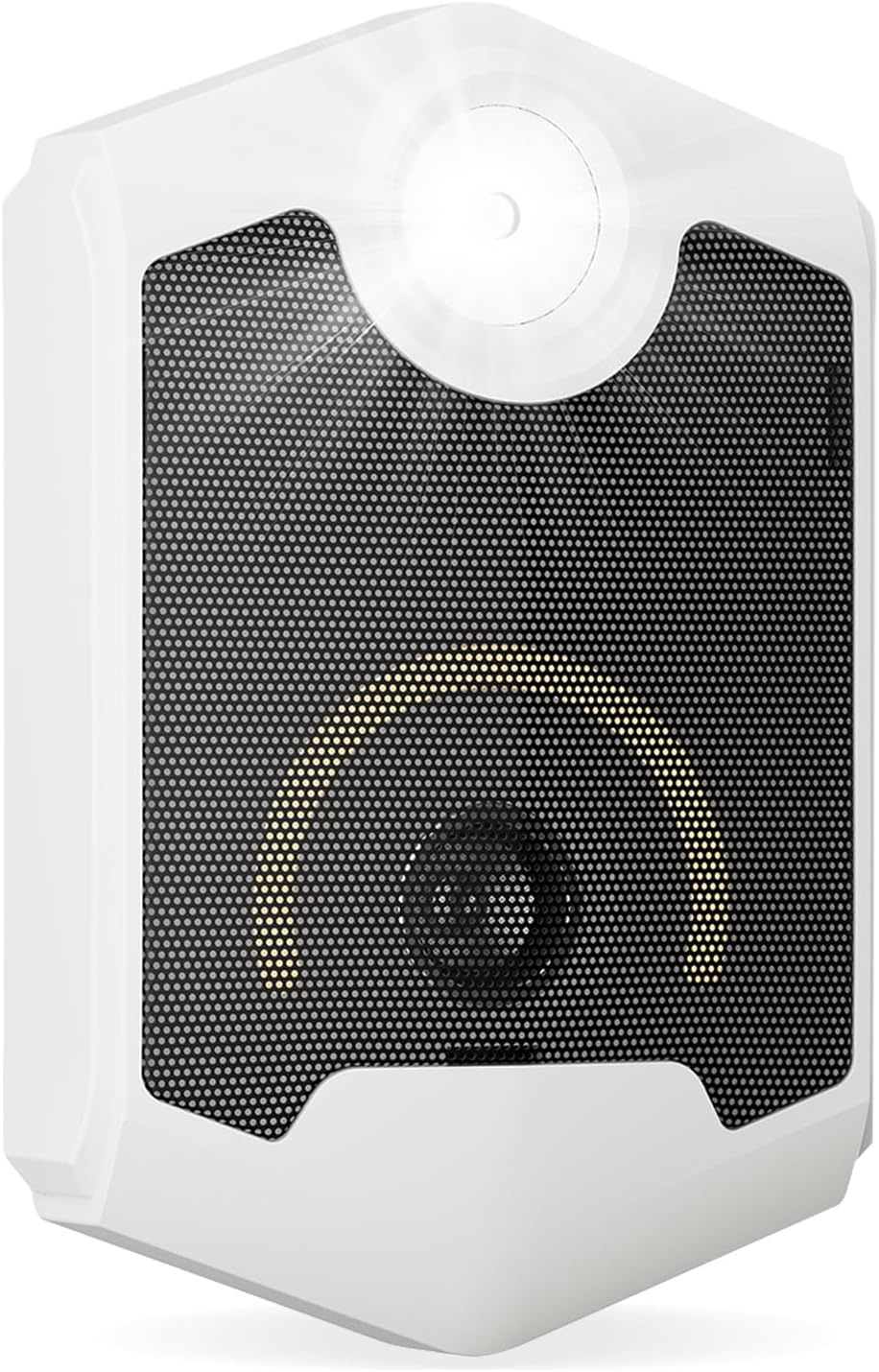
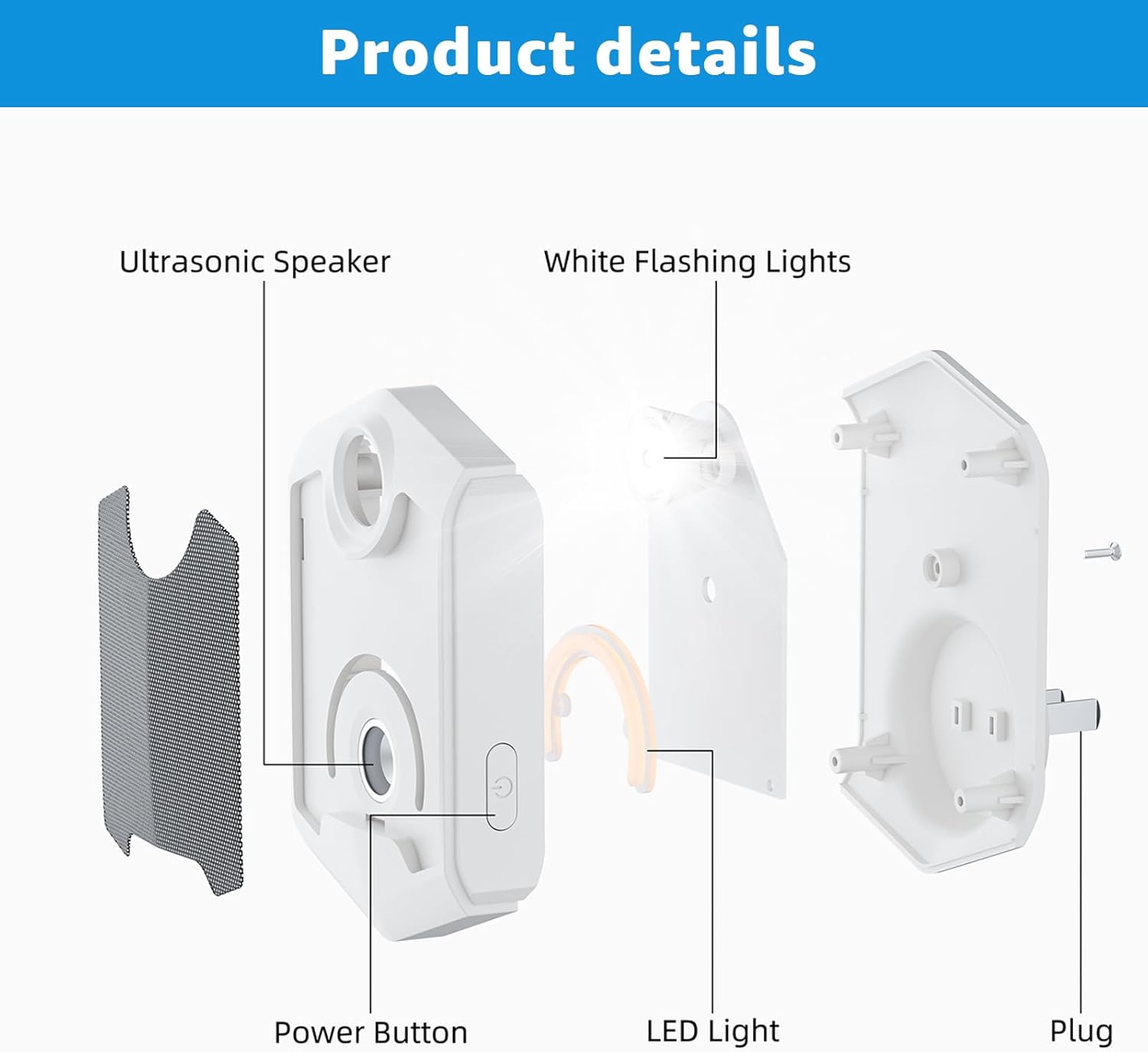
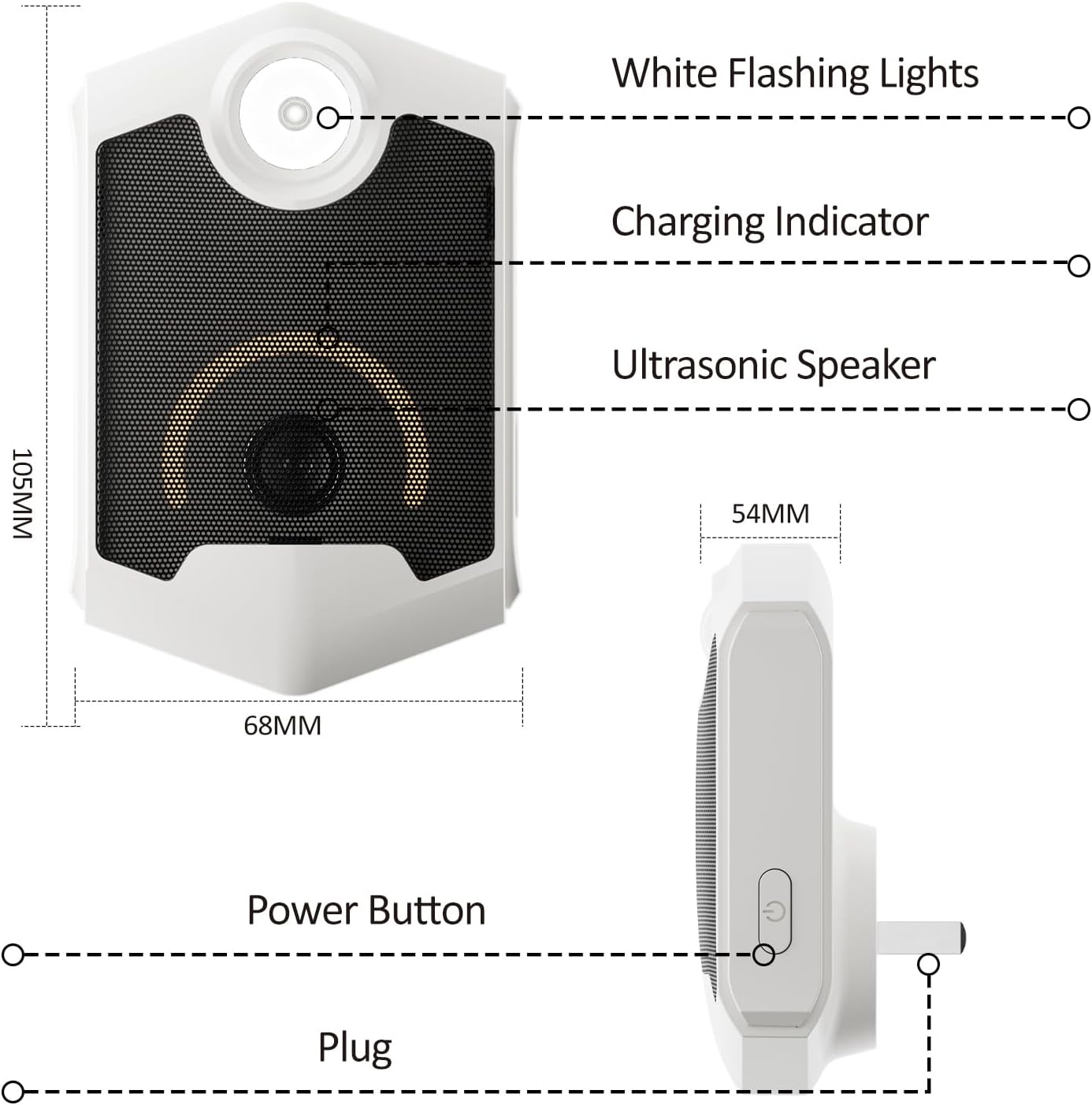
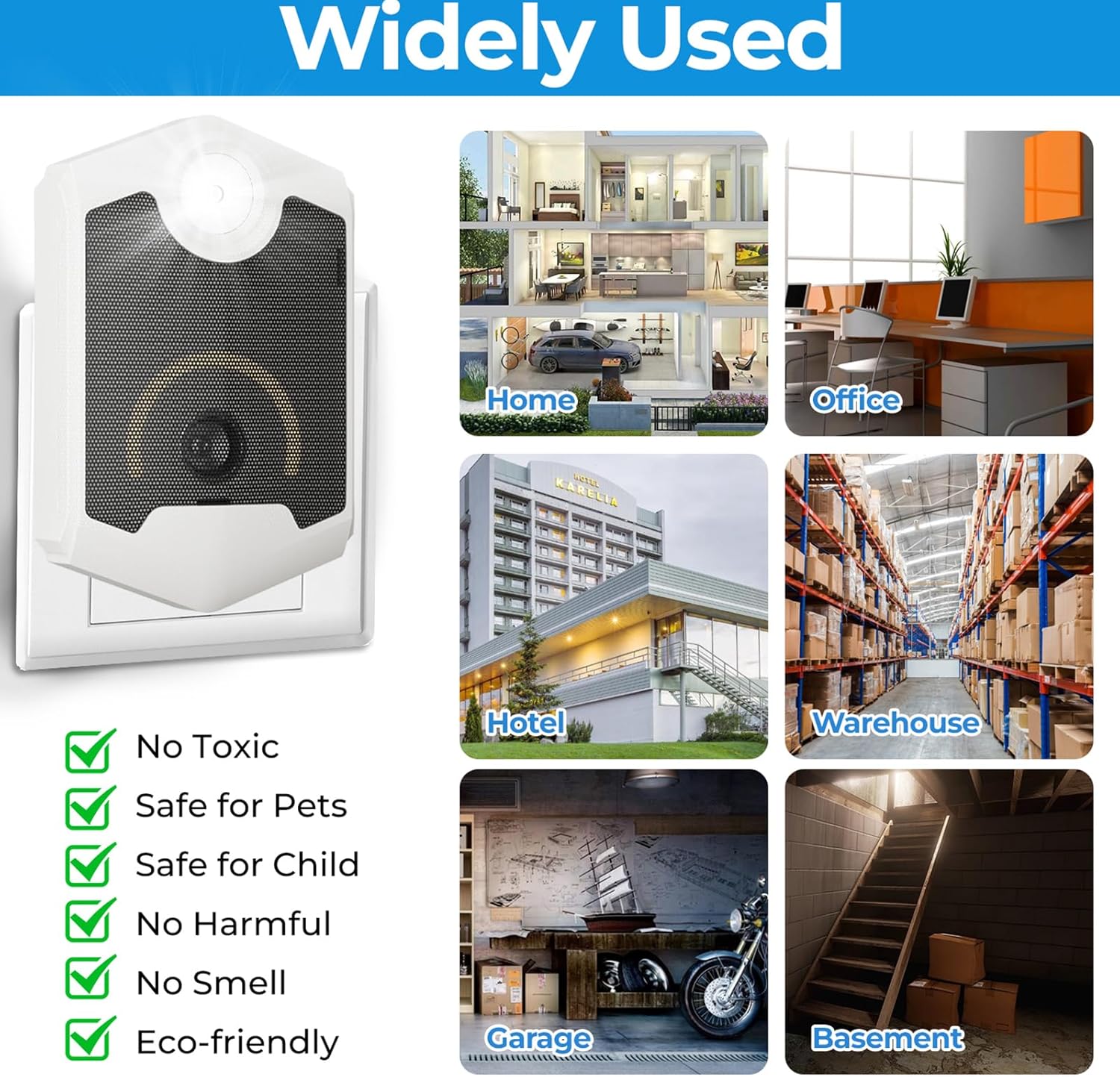
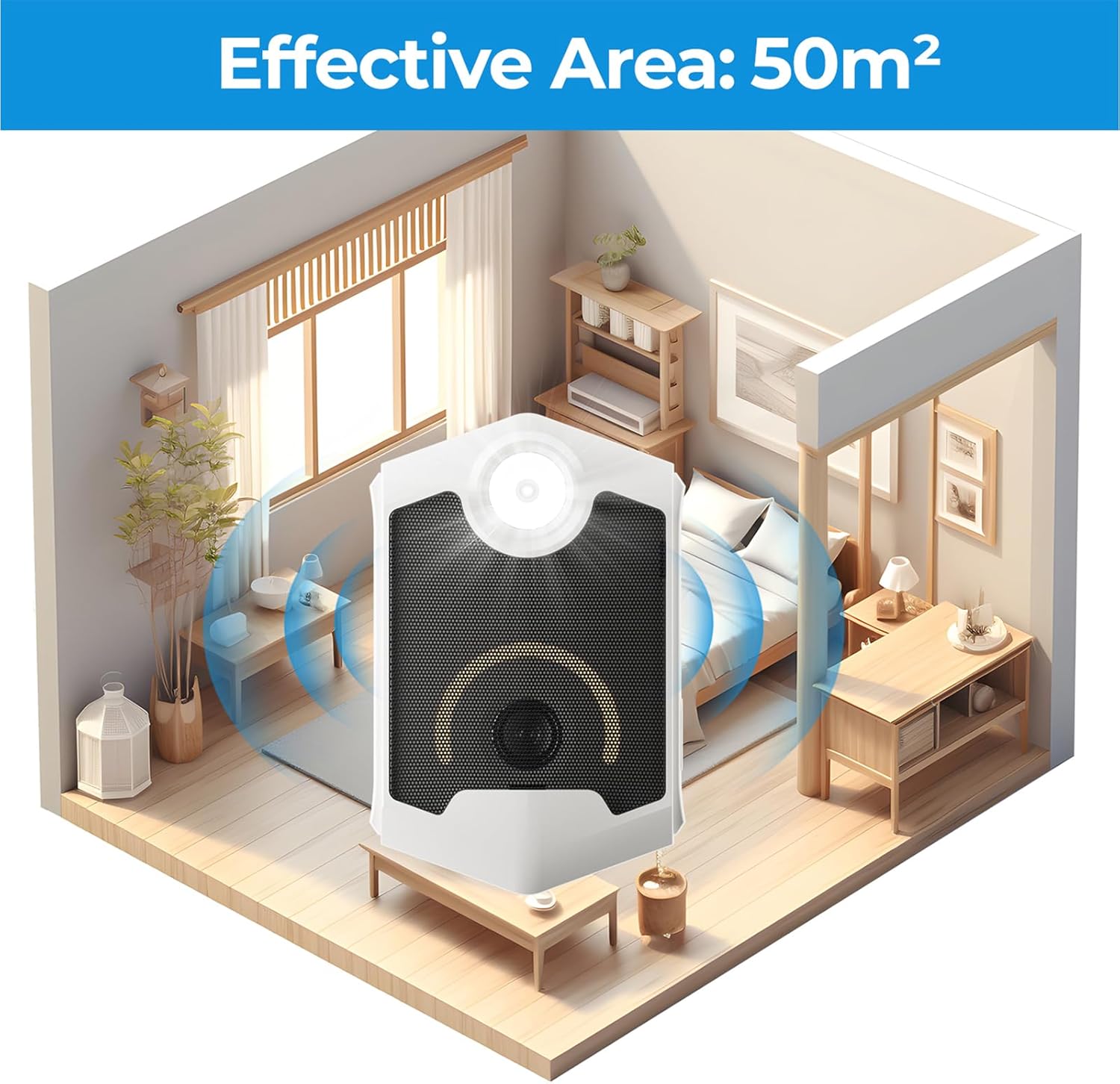
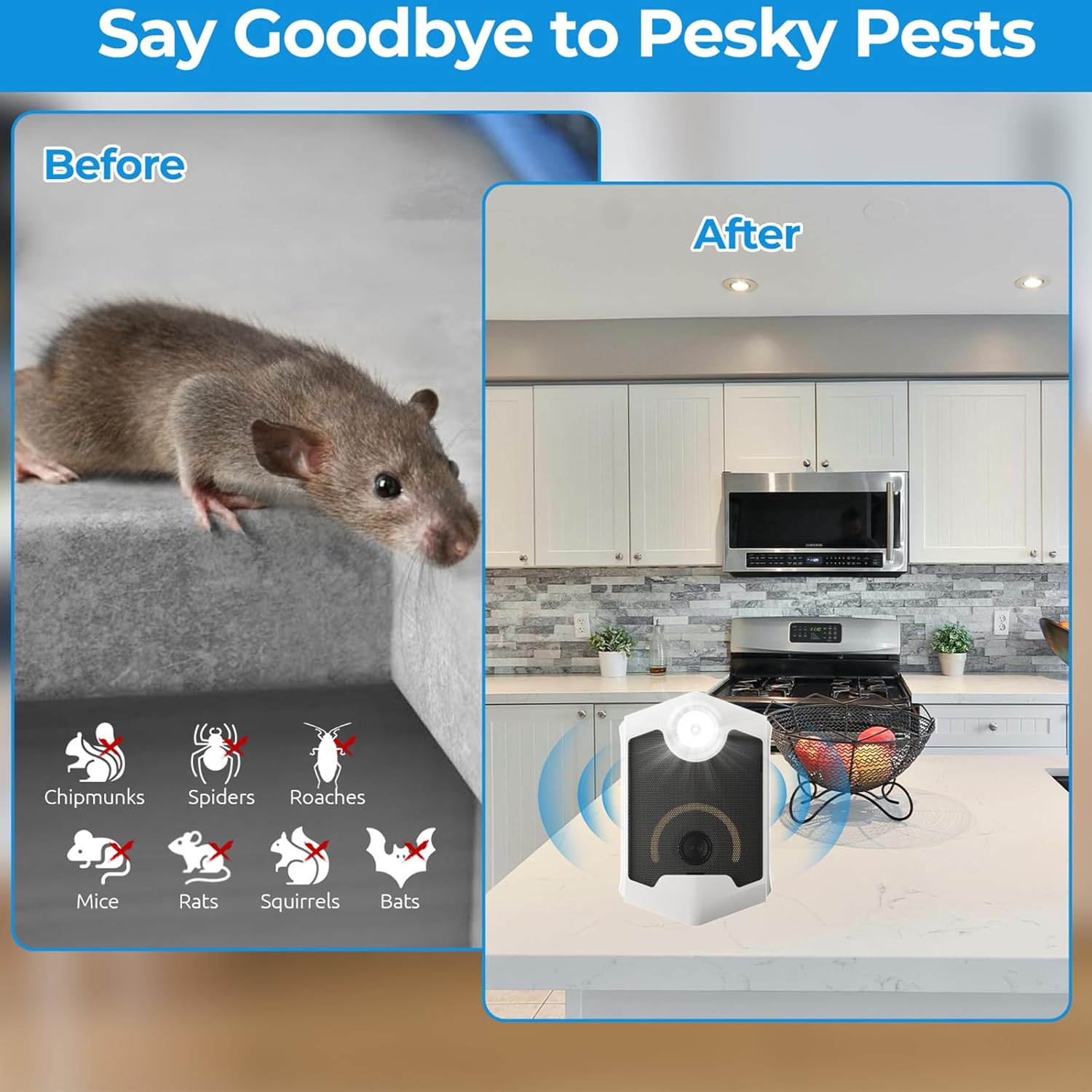
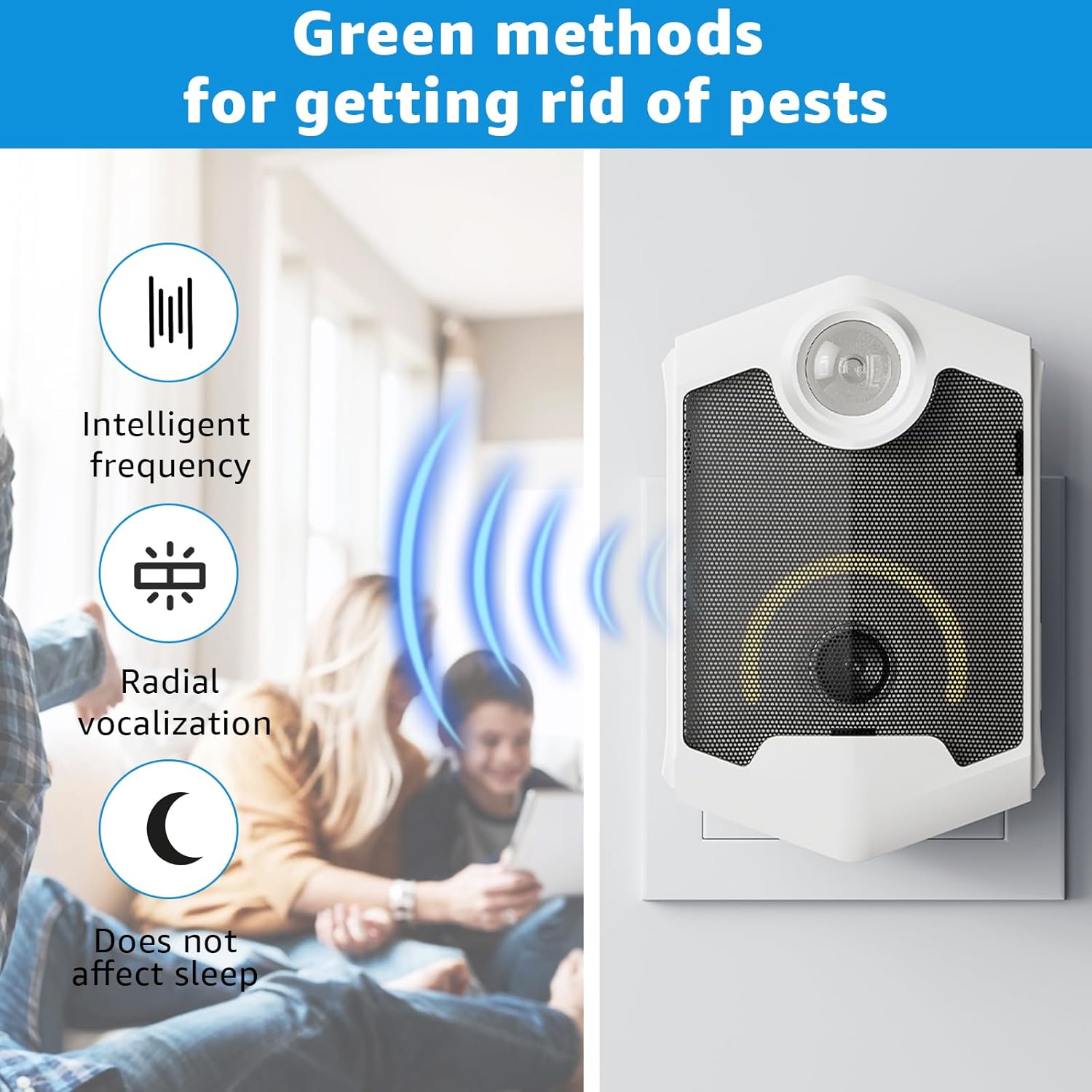
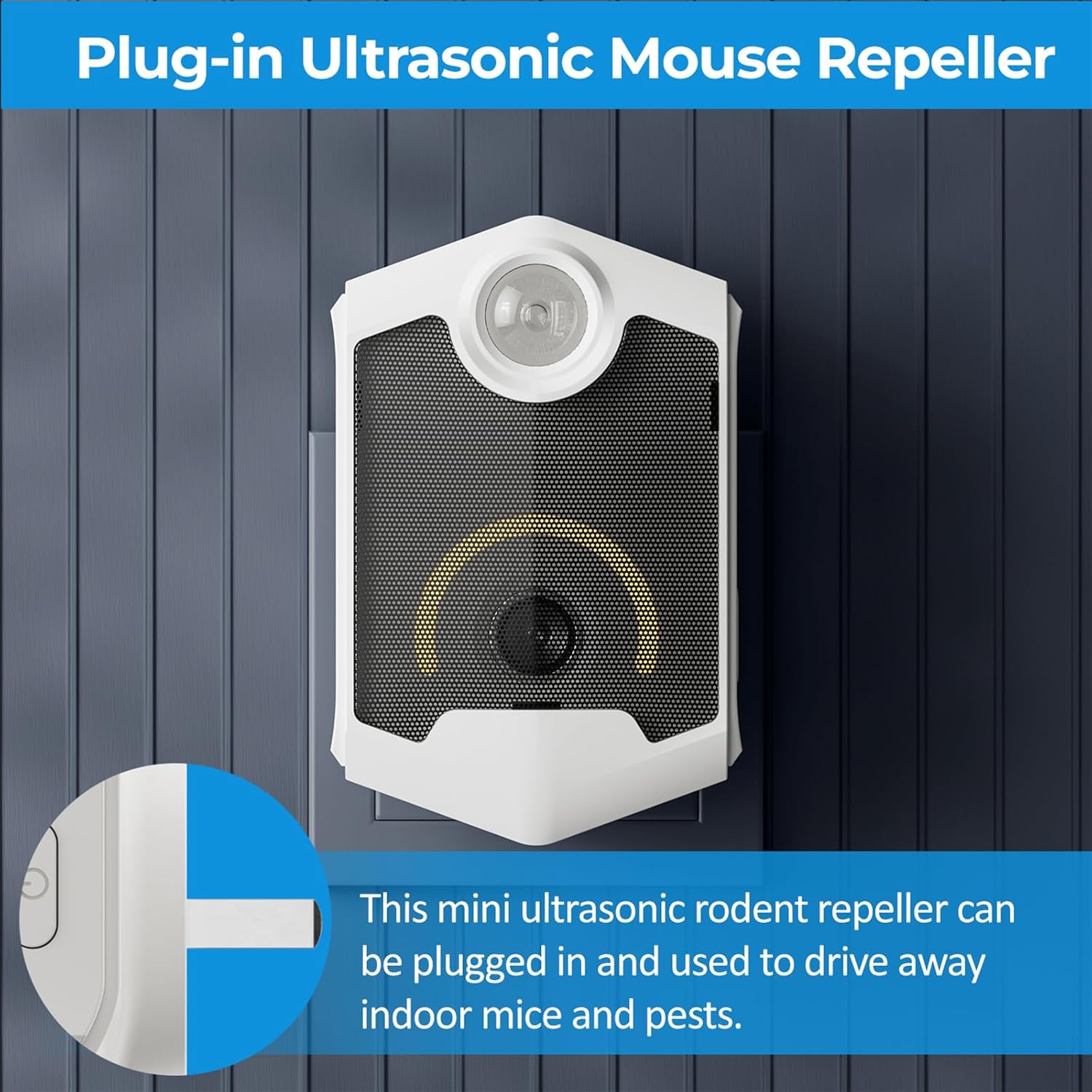
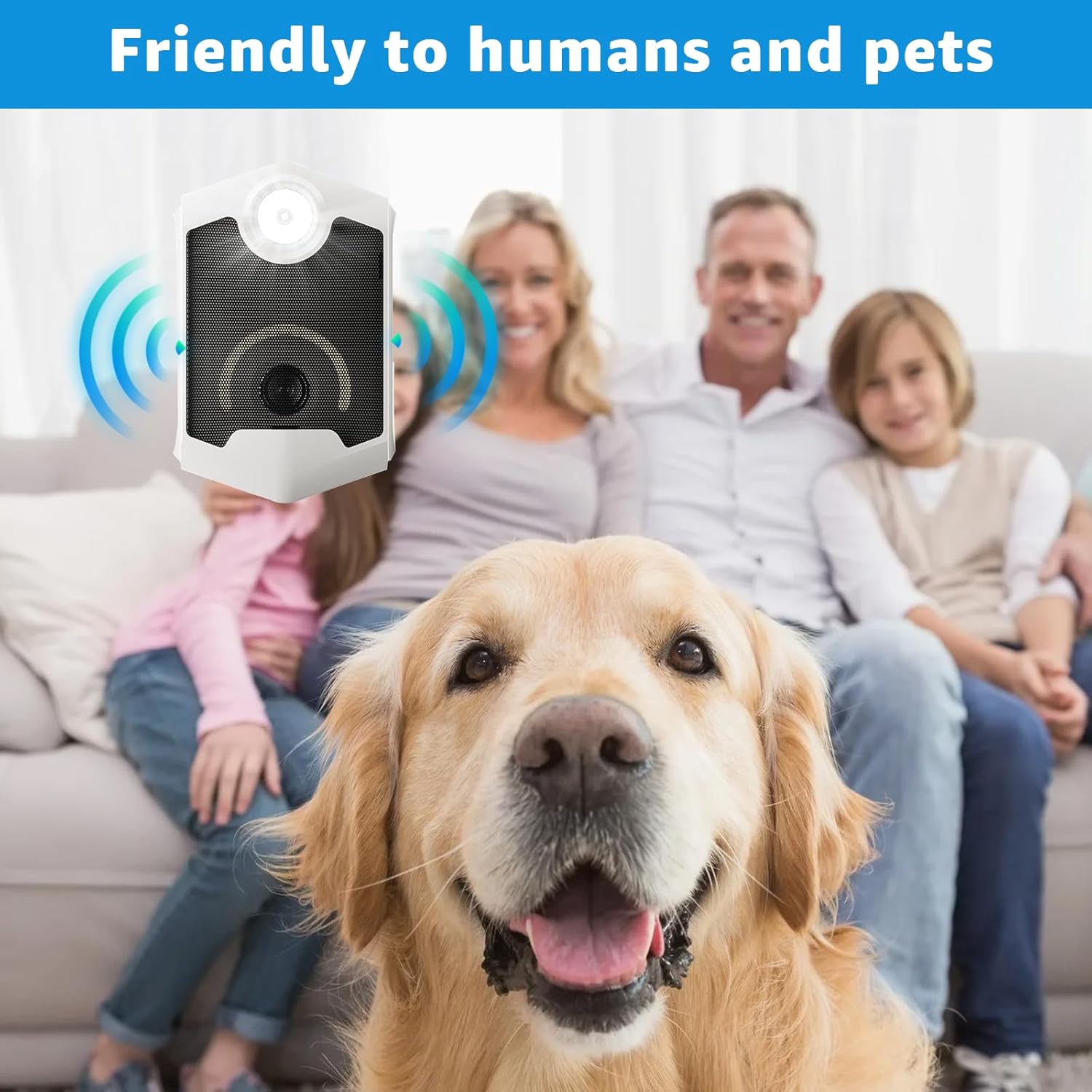
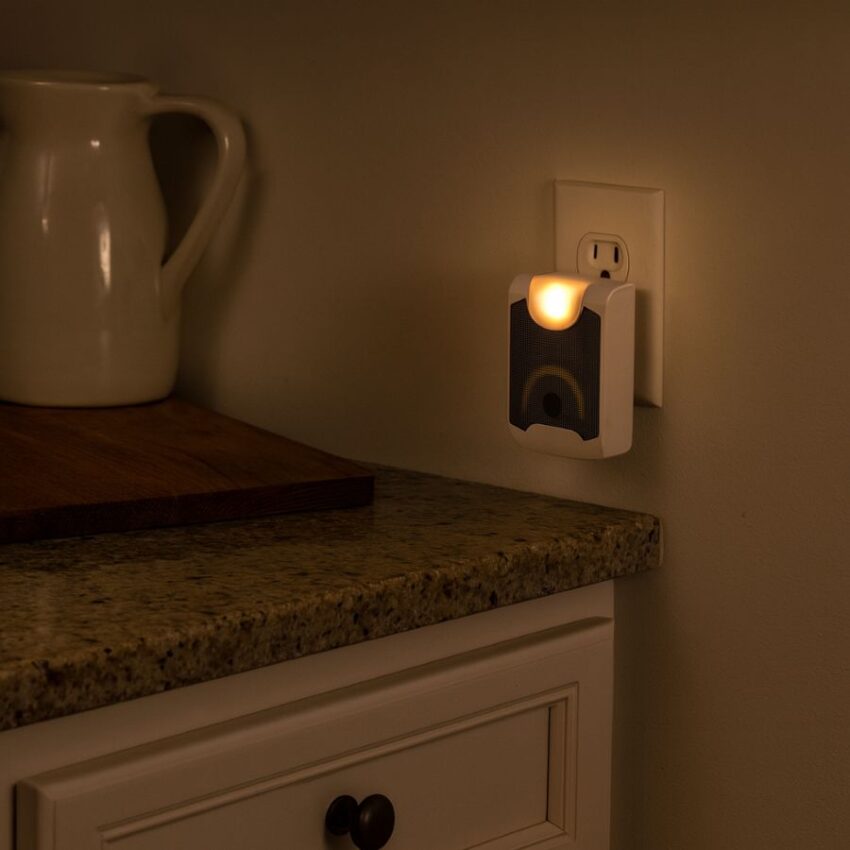
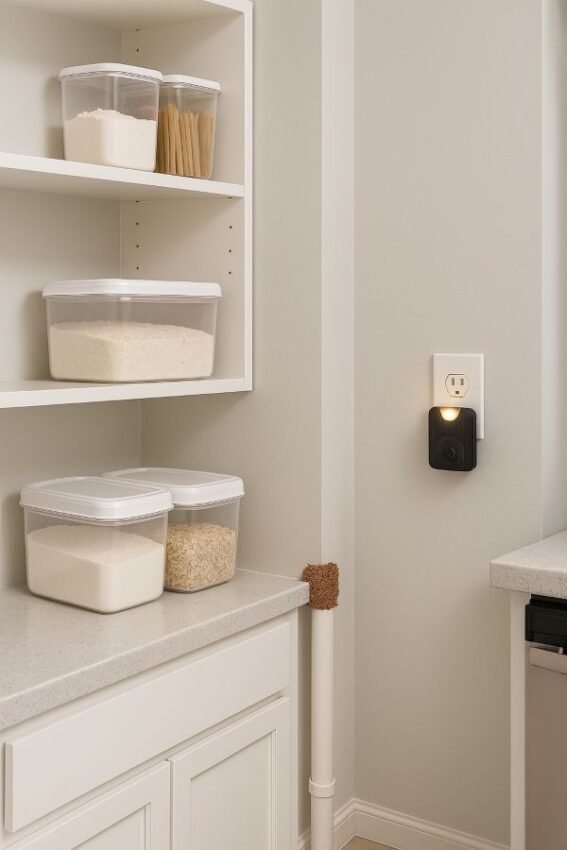
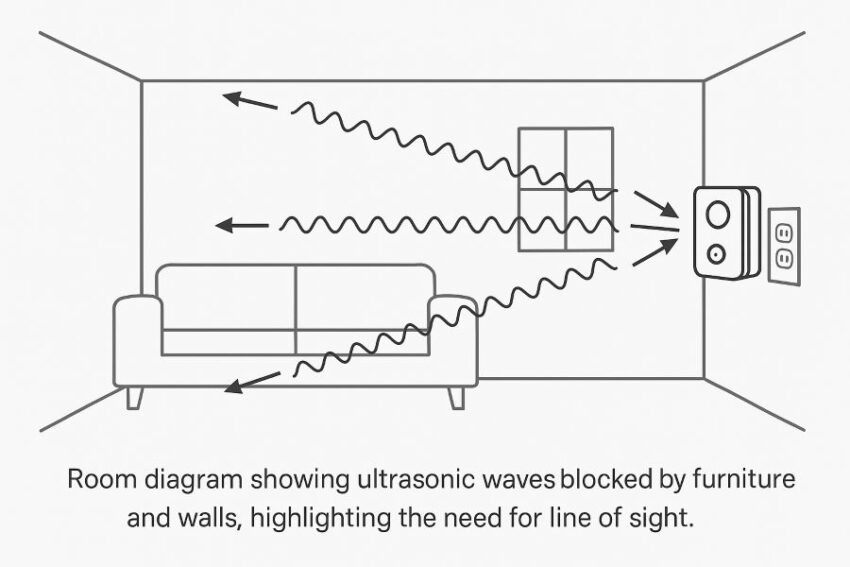
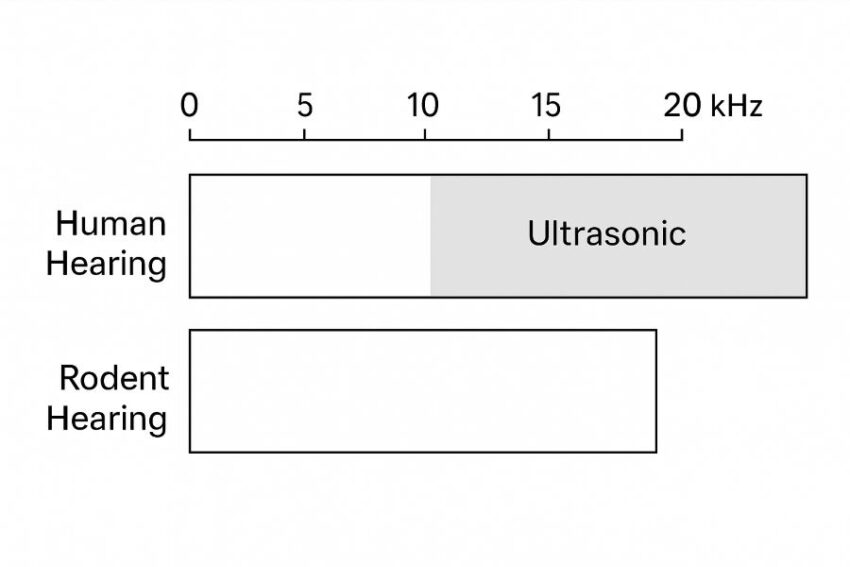
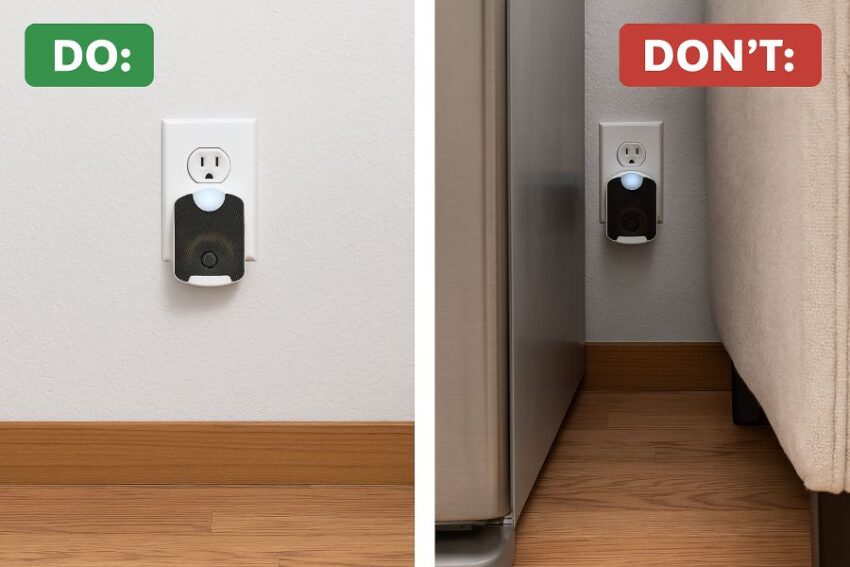
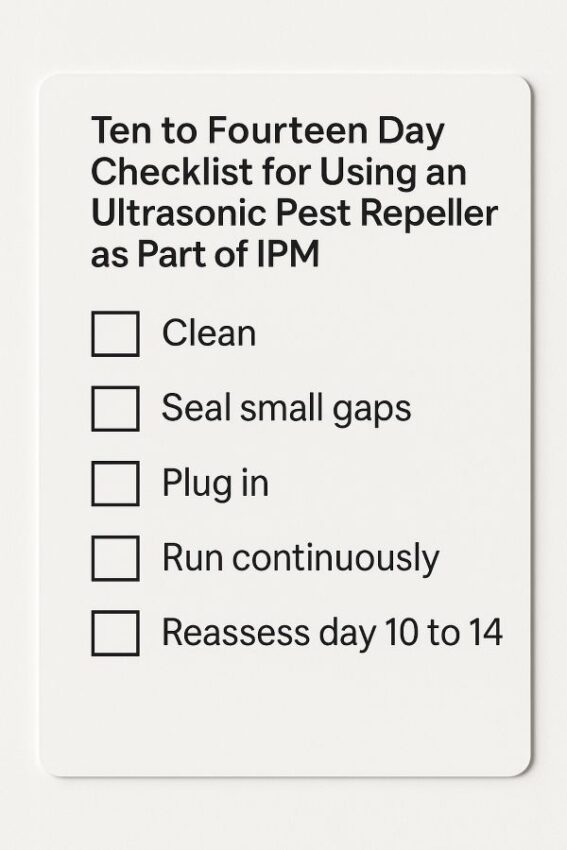
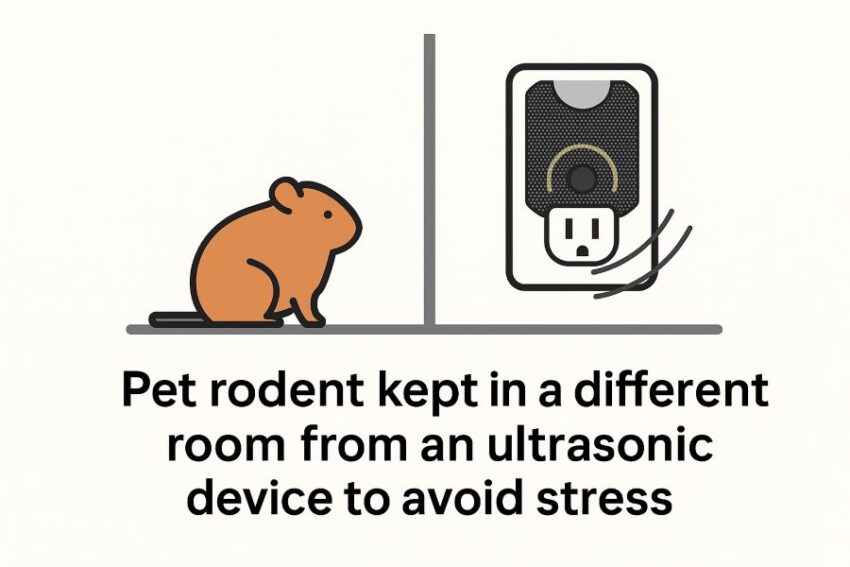
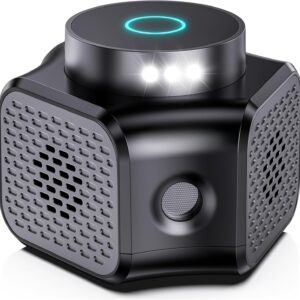
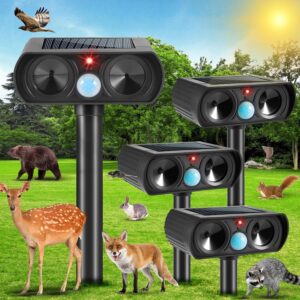
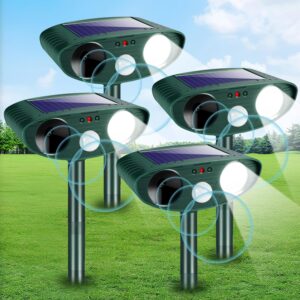
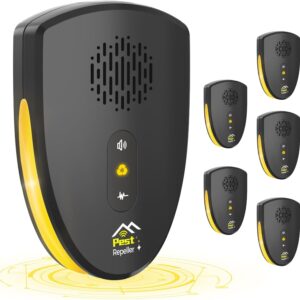
Reviews
There are no reviews yet.